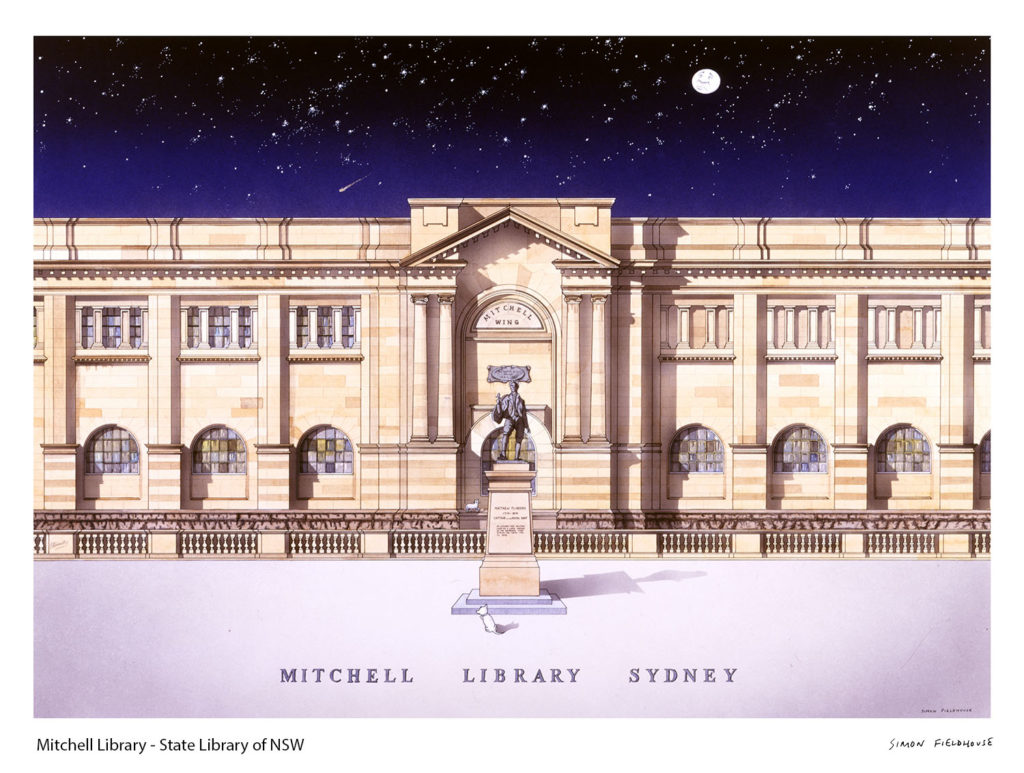
Mitchell Library - State Library of NSW
The Mitchell Library, nestled within the State Library of New South Wales in Sydney, stands as a testament to history, knowledge, and the rich cultural heritage of Australia. Named after David Scott Mitchell, a voracious collector and benefactor of its extensive resources, this institution holds an esteemed position in the realm of libraries, both in Australia and internationally.
The Mitchell Library, established in 1910, houses a remarkable collection of materials that encompass a wide array of subjects, including rare books, manuscripts, maps, photographs, and various historical documents. Its collection is a treasure trove for researchers, scholars, historians, and the general public, offering a glimpse into the diverse and multifaceted tapestry of Australia's past.
At its core, the library is a reservoir of knowledge. The collection spans centuries and continents, encompassing everything from the earliest colonial records to contemporary publications. Its vast array of materials reflects the depth and breadth of Australia's history, including indigenous cultures, early European exploration, and the socio-political developments that have shaped the nation.
One of the library's most notable features is its collection of rare and valuable items. This includes the personal library of David Scott Mitchell, which forms the cornerstone of its holdings. His collection features rare manuscripts, books, and maps that offer unique insights into the colonial history of Australia. Additionally, the library preserves culturally significant materials such as Aboriginal language dictionaries, early newspapers, and records of the First Fleet.
Beyond its historical significance, the Mitchell Library serves as a center for education, research, and cultural engagement. The institution hosts exhibitions, lectures, and educational programs, inviting the public to explore and learn from its wealth of resources. Its role in digitizing and making materials accessible online has further widened its impact, allowing a global audience to delve into Australia's heritage.
The architectural magnificence of the Mitchell Library is a sight to behold. The building itself is a blend of classical and modern architecture, inviting visitors into a space that exudes both grandeur and scholarly pursuit. With its majestic reading rooms, art exhibitions, and state-of-the-art facilities, the library provides an inspiring environment for learning and exploration.
Moreover, the Mitchell Library's significance extends beyond the physical boundaries of its building. It stands as a symbol of intellectual curiosity, preservation of knowledge, and the importance of understanding one's past to shape the future. It symbolizes the collective memory of a nation, providing a space for both the preservation and dissemination of knowledge.
In conclusion, the Mitchell Library within the State Library of New South Wales stands as a beacon of historical preservation, knowledge, and cultural heritage. Its invaluable collection, commitment to accessibility, and role as a cultural and educational hub make it an indispensable institution for scholars, researchers, and the general public. As it continues to evolve and adapt to the changing landscape of information and technology, the Mitchell Library remains a cornerstone of Australia's cultural identity and an enduring testament to the importance of learning from the past.
The library building, designed by Walter Liberty Vernon, an eminent government architect, embodies the grandeur of the Beaux-Arts style. Completed in 1910, its design reflects a classical aesthetic characterized by monumental facades, symmetrical proportions, and elaborate ornamentation. The exterior features sandstone facades, majestic columns, and intricate detailing that evoke a sense of architectural elegance and timelessness.
Upon entering the library, visitors are greeted by an awe-inspiring vestibule adorned with marble columns and a soaring dome, creating a sense of grandeur and splendor. The magnificent Mitchell Library Reading Room, a centerpiece of the building, boasts a vast space with a high domed ceiling, flooded with natural light from the impressive skylights. The room's design encourages a contemplative and scholarly atmosphere, offering a serene environment for research and study.
The architectural design of the Mitchell Library has evolved over time to accommodate technological advancements and the changing needs of its patrons. While maintaining its historical charm, the library has incorporated modern amenities and facilities to support contemporary research and education. State-of-the-art equipment, digital resources, and specialized research areas have been integrated without compromising the integrity of the building's classical architecture.
The library's recent renovations and adaptations have aimed to preserve the historical elements while enhancing functionality and accessibility. New spaces, such as exhibition areas, lecture halls, and interactive learning zones, have been incorporated to engage visitors and encourage a deeper understanding of the library's collections and the broader cultural context they represent.
The architectural significance of the Mitchell Library lies not only in its visual appeal but also in its ability to create an environment conducive to scholarly pursuits. The balance between historical charm and modern utility creates a space that honors the past while embracing the future. It stands as a testament to the enduring legacy of architectural excellence and its role in fostering a love for learning, exploration, and cultural appreciation.
In summary, the architecture of the Mitchell Library within the State Library of New South Wales is a harmonious blend of classical grandeur and contemporary functionality. Its design evokes a sense of history, elegance, and scholarly inspiration, providing a fitting setting for the preservation and dissemination of knowledge. The architectural beauty of the Mitchell Library continues to captivate visitors while serving as a beacon of learning and cultural significance.